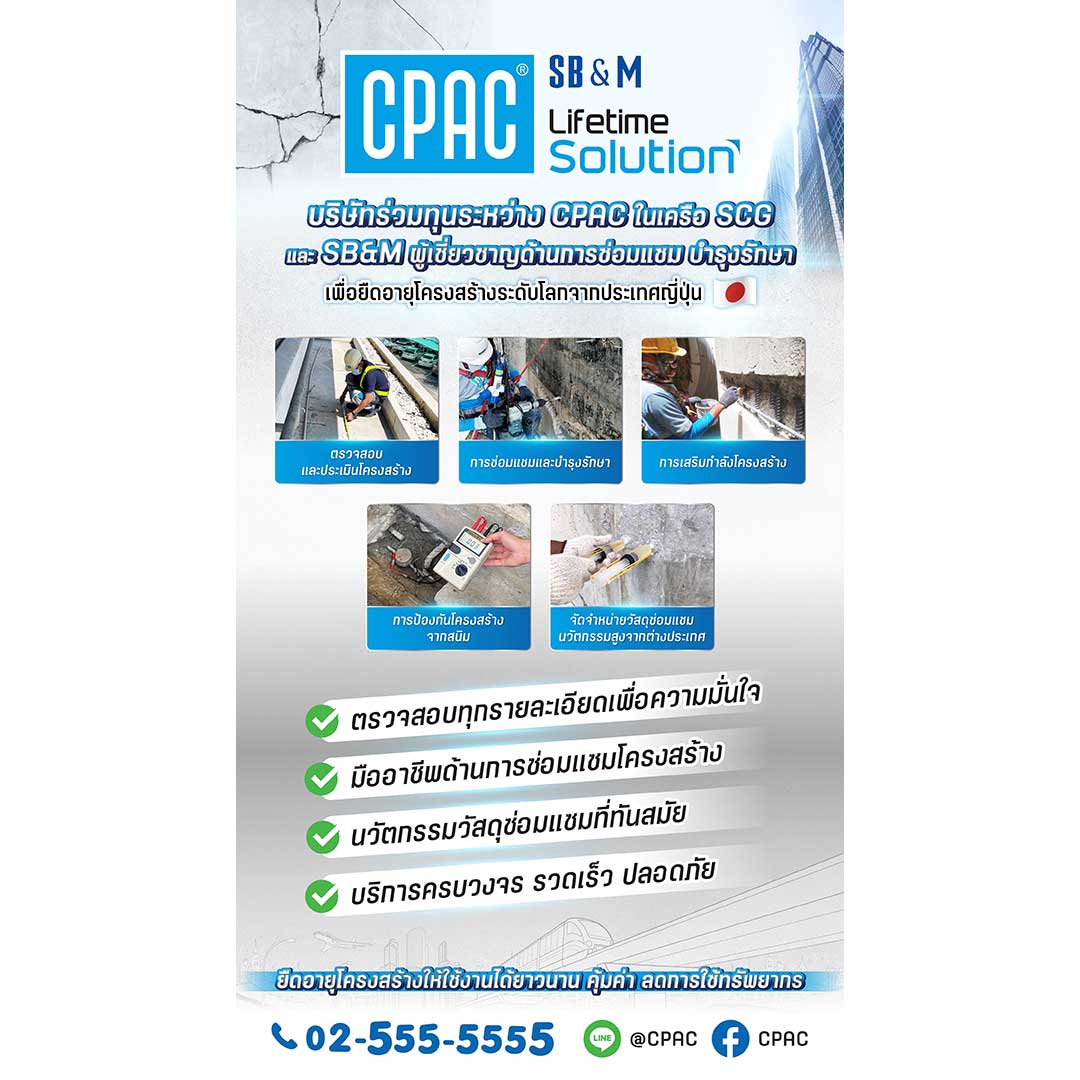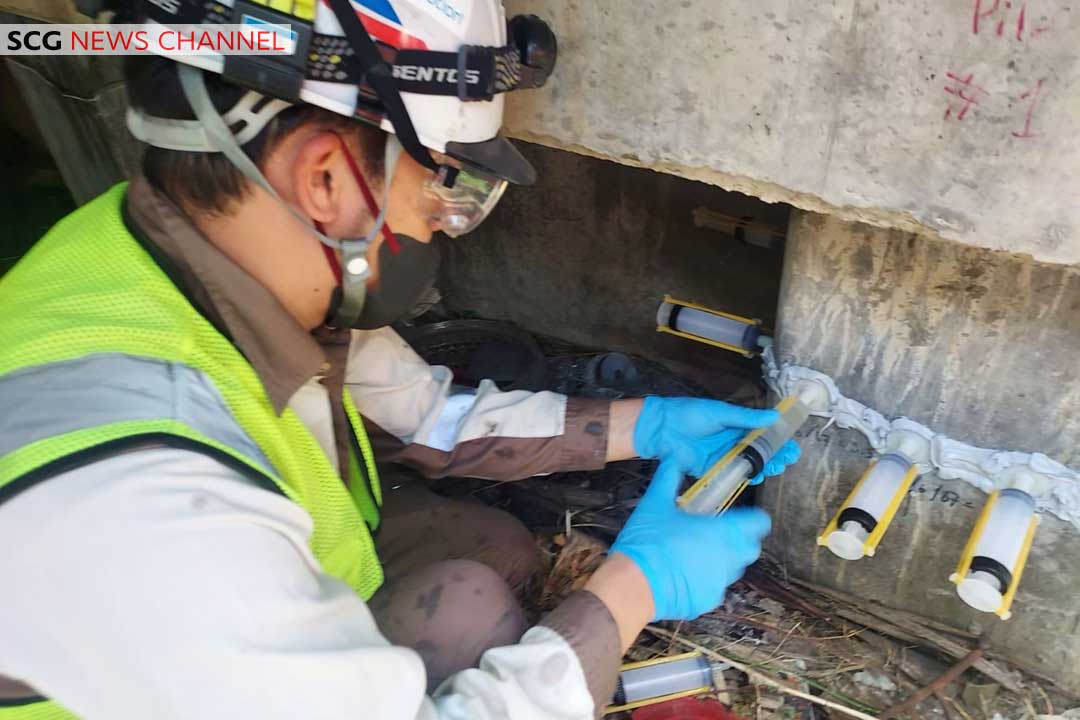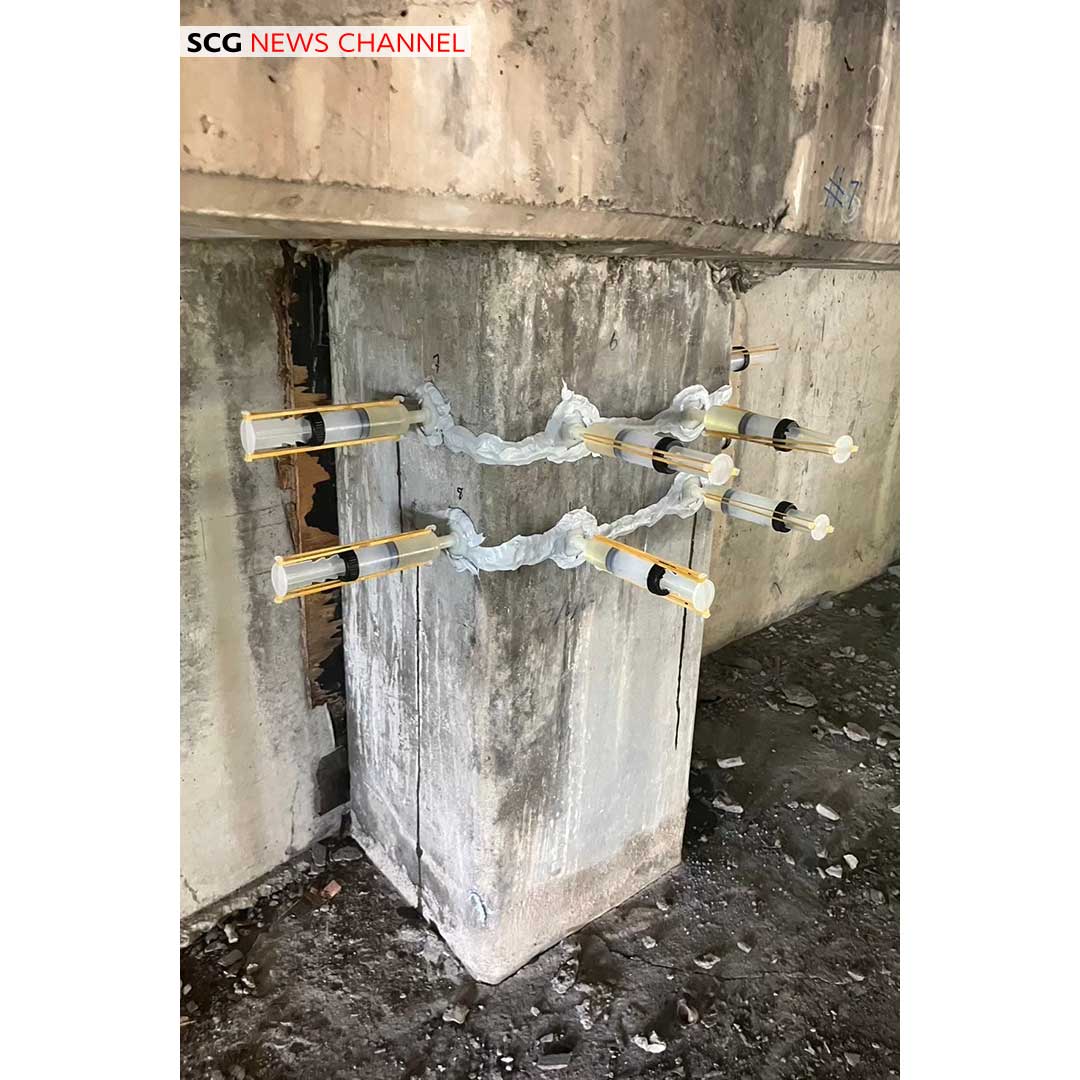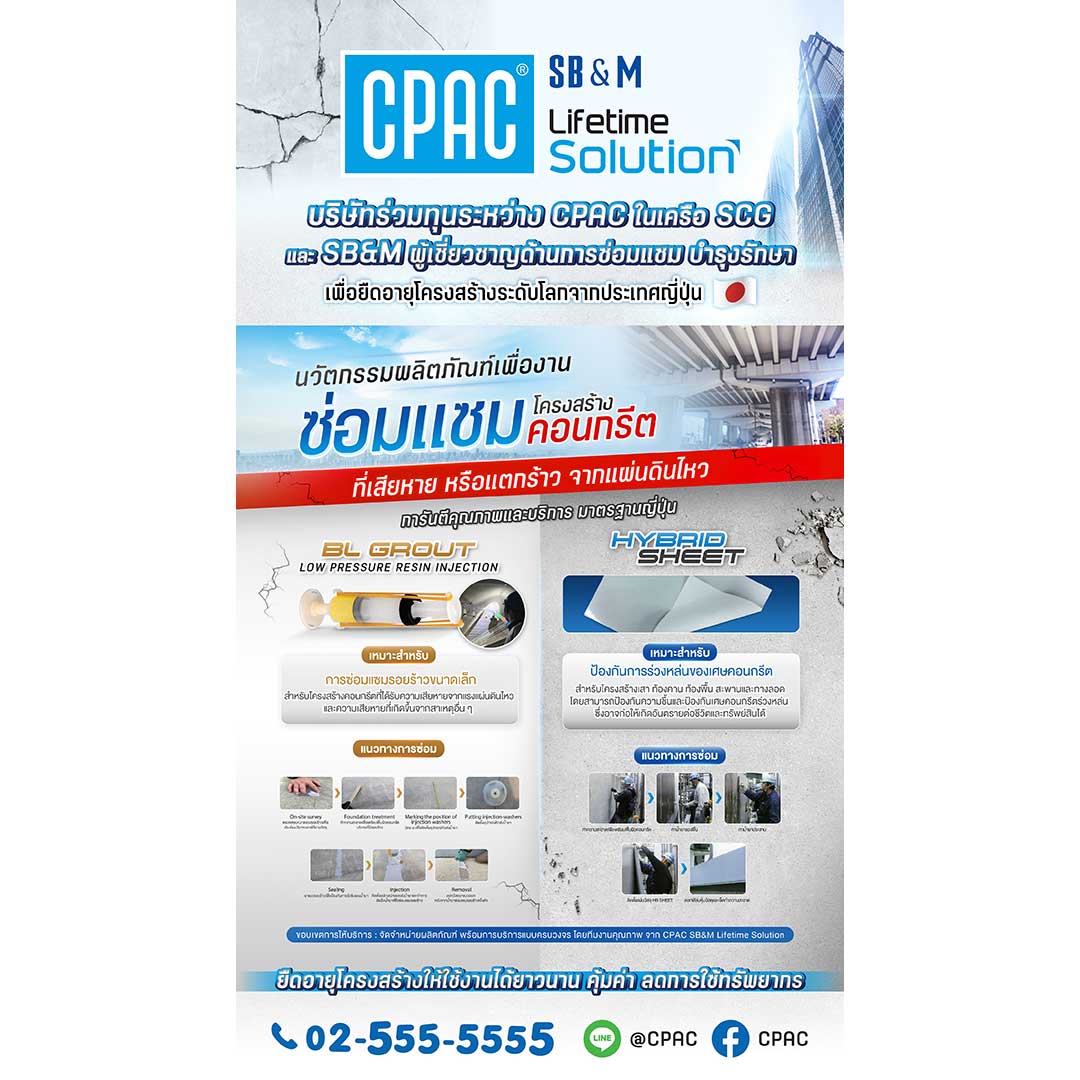As many infrastructure and buildings across Thailand exceed 30-50 years of service life while facing new risks from natural disasters, structural repair and maintenance have evolved beyond routine upkeep. These services now represent a “national defense line” that extends building lifespans, reduces losses, and prevents significant economic damage.
Earthquakes: A Risk Closer Than Expected
Although Thailand does not lie on major global fault lines, the 7.7 magnitude earthquake in Myanmar on March 28, 2025, sent tremors throughout multiple Thai provinces, causing structural damage to numerous buildings. Similarly, the 6.4 magnitude earthquake in Mae Lao District, Chiang Rai Province in 2014 created vibrations that affected high-rise buildings in Bangkok. These events demonstrate that Thai structures, particularly older buildings—even those designed to withstand some seismic activity—should consider potential earthquake impacts.
CPAC, an SCG subsidiary that has formed a joint venture with SB&M, has integrated SB&M’s expertise and structural repair technologies to enhance its comprehensive Lifetime Solution business. This allows CPAC to deliver efficient construction services in Thailand, covering everything from inspection to repair, reinforcement, and deep structural damage prevention.
“We’re not just looking at repairs after damage occurs, but at extending lifespan and preparing buildings and structures to withstand unexpected events like earthquakes,” said Mr. Surachai Nimlaor, President of SCG Cement and Green Solutions.

Japanese Technology Adapted for Thailand
Japan is one of the world’s most experienced countries in earthquake response, and SB&M was formed by two leading Japanese companies: SHO-BOND, which specializes in microscopic repair materials, and Mitsui, a global trading and investment business group. Together, they have developed technologies for strengthening and repairing large structures following disasters.
Beyond expertise in microscopic repair materials, SB&M possesses in-depth specialized knowledge in technology, materials science, and repair innovation, particularly in three key areas:
- Research & Development: A team of over 500 researchers continuously developing new innovations
- Engineering Experts: Specialist engineers capable of designing precise, customized repairs
- Fine Particle Technology: Micron-level material technology enabling repair materials to adhere to and effectively restore structures
This joint venture brings together the knowledge and strengths of both SB&M and Mitsui through five core service groups offered by CPAC-SB&M:
- Advanced technology structural health assessment
- Engineering standard repairs and maintenance
- Structural reinforcement to enhance vibration resistance
- Rust and corrosion prevention to extend service life
- Provision of innovative materials specifically designed for repair work
Case Study: Post-Earthquake Restoration in Japan
The most critical aspect of building repair and protection is detailed damage assessment. This essential first step identifies the source and extent of damage before proceeding. Modern technologies such as structural scanning, 3D model analysis (BIM), or AI anomaly detection help determine whether a structure remains safe or requires repair or partial demolition.
The next step involves appropriate repair planning and design, considering safety during repairs, future service life, and costs. Selecting suitable materials and repair methods for specific damage types—such as concrete cracks, rusted steel, or foundation settlement—requires structural engineers or specialized experts.
This is followed by professional-standard repair implementation using skilled technicians or contractors with proper quality control (QC) and safety measures. Equally important is long-term maintenance and monitoring—not just completing repairs but establishing ongoing maintenance plans such as annual inspections and installation of structural monitoring systems like IoT sensors to detect vibrations, moisture, and settlement, reducing the risk of repeated damage and extending building lifespans.

One of SB&M’s notable achievements was the restoration of bridges and expressway structures in Kumamoto following the major earthquake in 2016. SB&M’s team rapidly inspected fracture points, improved foundations, and reinforced bridges to restore functionality quickly while enhancing future seismic resistance. The same technology is now being applied to Thai structures, including high-rises, condominiums, government buildings, hospitals, large bridges, and infrastructure.
From “Repair” to “Long-term Safety Investment”
In an era where aging structures and natural disasters increase Thailand’s risks, professional “repair” is no longer just an immediate solution but a long-term safety system for construction that affects lives, property, and the national economy.
CPAC-SB&M will leverage its knowledge and expertise to enhance collaboration with both public and private sector partners in maintaining critical structures nationwide, supported by expert engineers, world-class technology, and repair materials specifically designed for Southeast Asian environments.

For more information or details, contact CPAC Contact Center at 02-555-5555
Published on: May 8, 2025
 ดาวน์โหลดข่าว
ดาวน์โหลดข่าว
